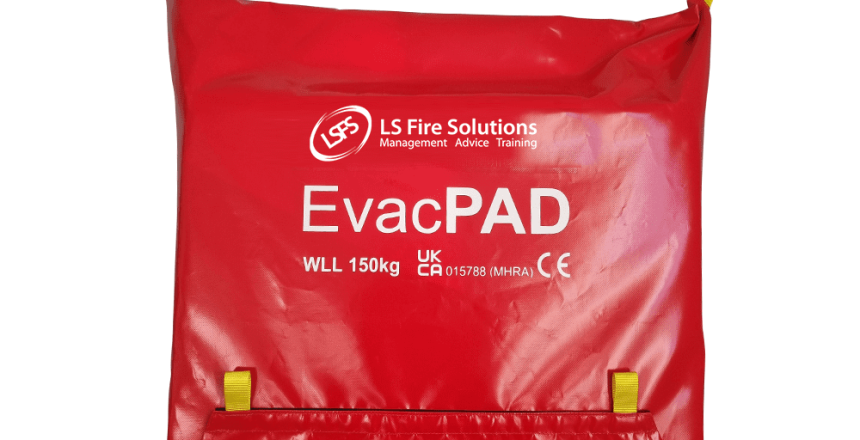So, now you have completed your Fire Risk Assessment and you have an Emergency Plan in place – but do you know about the various types of Fire Evacuation Aids and when to use these?
If there are people in your building with a PEEP (Personal Emergency Evacuation Plan) in place, due to impaired mobility, you will need to ensure they can get to a place of safety. This can be achieved by knowing about the different types of Evacuation and Evacuation Aids.
Horizontal and Vertical Evacuation
Depending on your building, you may need to plan for a horizontal or vertical evacuation.
Vertical Evacuation is the preferred method of moving people out of a building during a fire. This type of evacuation involves using the stairs to move people to safety via the ground floor. Generally speaking, this means that people exiting will need minimal assistance or are able to self-evacuate.
Horizontal Evacuation involves moving people to a place of relative safety for a set period of time based on the level of protection provided by the fire compartmentation (walls and doors) within the building. For example, 30-minutes, 60-minutes, 120-minutes or 240-minutes. These may be signed or deemed as refuge points and should have two-way communication. If you have employees or residents who are unable to self-evacuate by using the stairs, there must be a robust evacuation procedure to ensure that these persons are evacuated from the place of relevant safety to total safety.
So, what if the building does not have a place of relative safety and persons need to be evacuated straight away?
In the event that a Vertical Evacuation is the only option, you will need to ensure that the appropriate Fire Evacuation Aids have been installed within the building. These aids will help to ensure that a quick and safe evacuation is possible for those more vulnerable persons.
What Evacuation Aids are available?
If you need to get persons with limited mobility out of a building quickly, there are various Evacuation Aids that are available to help. These fall into three main categories:
Evacuation Chairs
Evacuation Chairs are designed for use by a minimal number of staff/employees (1-2) to evacuate persons with limited mobility vertically down a set of stairs in a seated position. Most Evacuation Chairs are designed with tracks that run down the nose of stairs.
Chairs can be manually or electrically powered and are suitable for most types of stairs, except for spiral staircases and gradients that are steeper than forty degrees.
Evacuation Sheet
Evacuation Sheets can be positioned under mattresses within healthcare settings to allow for the mattress to double up as an Evacuation Aid. This is achieved by using the mattress as the protection and padding for the patient and the Evacuation Sheet for the security of the patient and ease of transfer (horizontally or vertically).
These are typically used by teams of two to three people.
Evacuation Pads
This type of fire evacuation aid evolved from mountain rescue and is a perfect alternative when storage space is limited, or there’s no space to evacuate via a mattress.
An Evacuation Pad is a good alternative to an Evacuation Chair or Evacuation Sheet as the padding/protection is already built in, unlike an Evacuation Sheet, and less space and servicing is required, unlike with an Evacuation Chair.
These can often be a cost-effective way to ensure that a premise is provided with an optimal number of Evacuation Aids to provide assistance to multiple persons with limited mobility at any one time.
It should be noted that Evacuation Chairs will require annual servicing and Evacuation Sheets and Pads will require regular visual inspections.
Manage your Fire Safety needs
Before purchasing a Fire Evacuation Aid for your premises, a Fire Risk Assessment and Evacuation Plan should be undertaken/reviewed by a professional Fire Risk Assessor. If Fire Evacuation Aids is deemed a requirement for your premises, these should be procured, installed and training provided before use.

